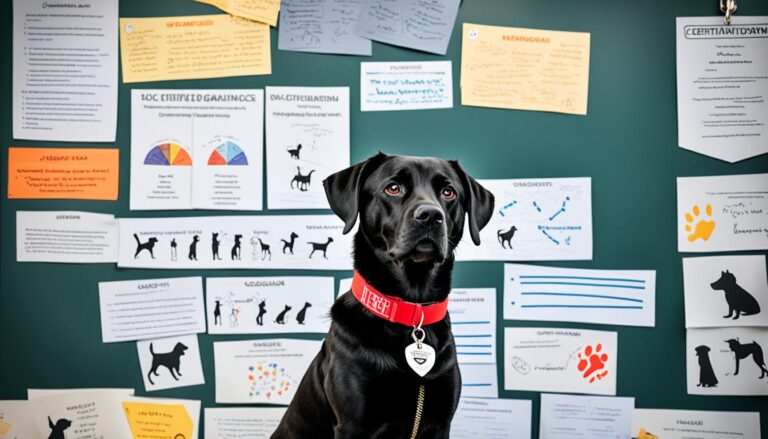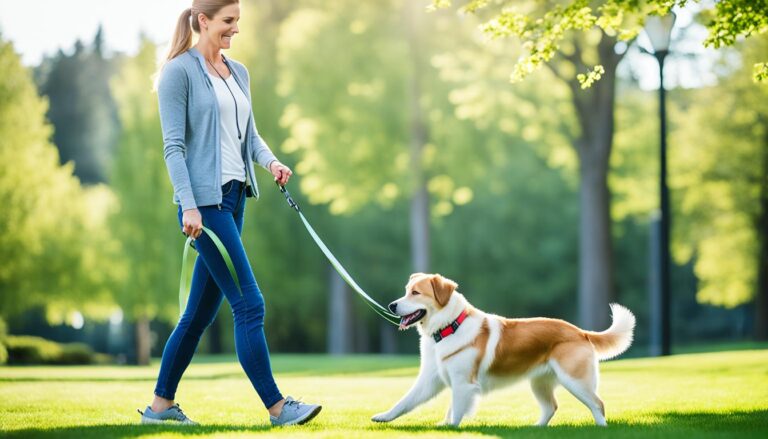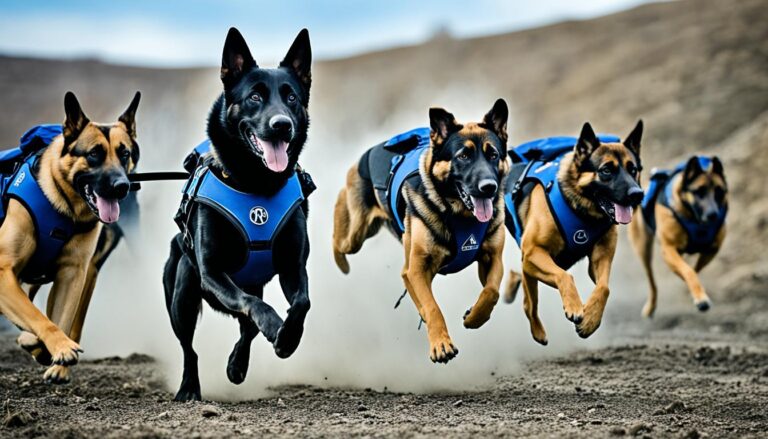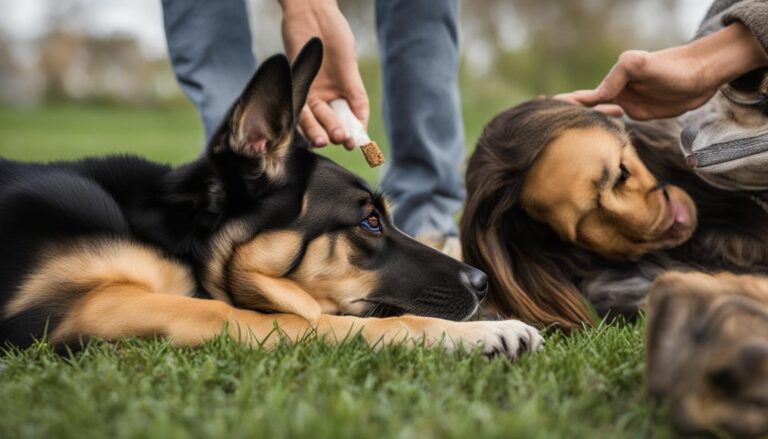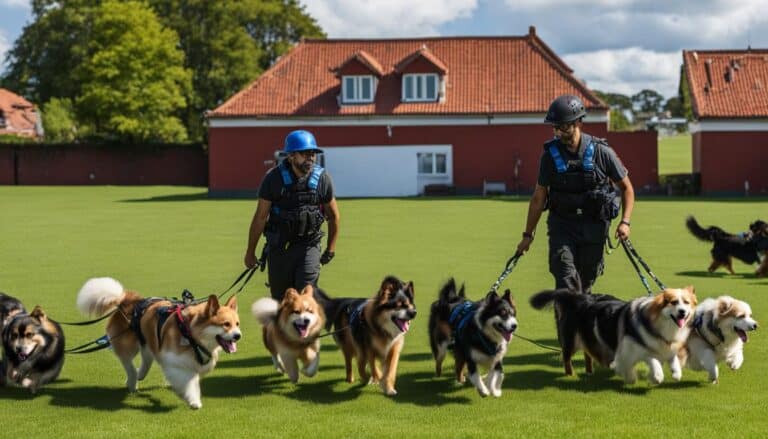How Long to Train a Dog
From the first wag of their tail to the unconditional love they offer, dogs have a unique way of capturing our hearts. Whether you’re starting with a playful puppy or adopting a mature companion, the journey of training and bonding with your furry friend is an adventure like no other. But have you ever wondered just how long it takes to train a dog?
If you’re eagerly searching for answers, you’ve come to the right place! In this article, we will delve into the fascinating world of dog training and explore the duration it takes to master canine obedience. So, grab your pup’s favorite toy, sit back, and let’s embark on this pawsitively captivating journey together!
Good practices in Dog Training
Before embarking on your dog training journey, it’s essential to establish some good practices that will set you and your furry friend up for success. By following these effective dog training tips and best practices, you can create a positive training experience and foster a strong bond with your dog.
Avoid Repeating Commands
When giving commands to your dog, it’s important to avoid repeating them multiple times. Dogs learn through consistency and repetition, so repeating commands can confuse them or make them reliant on hearing the command multiple times before responding. Instead, give clear, concise commands once and wait for your dog to respond before giving praise or moving on with the training.
Create a Pleasurable Experience
Make dog training a fun and enjoyable activity for both you and your dog. Use positive reinforcement techniques, such as treats, praise, and play, to reward your dog for following commands correctly. This positive association will motivate your dog to eagerly participate in training sessions and make the learning process more enjoyable for both of you.
Facilitate Predictable Outcomes
Dogs thrive on consistency and predictability. When training your dog, establish clear rules and expectations so that they know what behaviors are desired. Using consistent cues and signals will help your dog understand what is expected of them and make it easier for them to respond appropriately to commands.
Pay Attention to Rewards
The rewards you use during dog training play a crucial role in motivating and reinforcing desired behaviors. Choose rewards that are highly appealing to your dog, such as high-value treats or engaging toys. Tailor the rewards to your dog’s preferences, and consider using a variety of rewards to keep training sessions exciting and engaging.
Avoid Punishment
Punishment-based training methods can have adverse effects on a dog’s behavior and their relationship with their owner. Instead of focusing on punishment, concentrate on positive reinforcement and redirection. By rewarding good behavior and redirecting unwanted behavior, you can effectively shape your dog’s behavior while maintaining a strong bond based on trust and respect.
What are the 3 D’s of Dog Training?
When it comes to training your dog, it’s essential to have effective strategies in place. One popular method that has proven to be successful is the 3 D’s of dog training – direct intervention, delegation of assistance, and distraction.
Direct Intervention
In direct intervention, you address the situation head-on. This means providing clear commands and guidance to your dog. By offering direct intervention, you can establish boundaries and expectations, helping your dog understand what behavior is desired.
Delegation of Assistance
Sometimes, you may need a little help when training your dog. Delegation of assistance involves seeking support from others, such as professional trainers or experienced dog owners, to assist you in the training process. They can provide valuable insights, guidance, and additional training techniques to enhance your dog’s learning.
Distraction
Distraction plays a crucial role in dog training. By redirecting your dog’s attention away from potential problem behaviors, you can encourage positive behaviors instead. This can be done through the use of toys, treats, or engaging activities that capture your dog’s focus and redirect their energy.
Implementing the 3 D’s of dog training offers a comprehensive approach to shaping your dog’s behavior. By using direct intervention, seeking assistance when needed, and employing distraction techniques, you can effectively train your dog and set them up for success.
When Should You Start Training Your Dog?
When it comes to training your dog, timing is crucial. The best age to start dog training is around 7 to 8 weeks of age. This is the ideal time to begin training and socializing your puppy, as they are more receptive to learning and new experiences. Starting training at a young age helps establish good behavior patterns and creates a strong foundation for future training endeavors.
Training a puppy from an early age allows you to shape their behavior and teach them essential commands and skills. It’s during these formative weeks that puppies are highly adaptable and eager to please, making the learning process more effective and enjoyable for both you and your furry friend.
By starting training early, you can prevent or address common behavior problems that may arise as your dog grows older. Early training and socialization improve your dog’s confidence, reduce anxiety, and promote positive interactions with other animals and people.
When training your puppy, remember to keep training sessions short and engaging. Puppies have short attention spans, so aim for multiple short sessions throughout the day rather than one long session. This way, you can maintain their focus and prevent them from getting bored or overwhelmed.
Always use positive reinforcement techniques, rewarding your puppy with treats, praise, and affection for desired behaviors. This helps create a positive association with training and motivates your puppy to continue learning.
Finally, be patient and consistent with your training efforts. Rome wasn’t built in a day, and the same goes for well-behaved dogs. Consistency is key, so make sure to reinforce the behaviors you want and redirect or discourage unwanted behaviors to set clear boundaries.
Remember that every dog is unique, and training progress may vary. If you encounter any challenges during the training process, consider seeking guidance from a professional dog trainer or behaviorist who can provide personalized advice.
Number of Sessions to Train A Dog
The number of training sessions required to fully train a dog can vary significantly. While it is generally advised to train dogs frequently, such as three short daily sessions, some research suggests that training once or twice a week may be more effective.
Increasing the frequency of training sessions can help reinforce learning and improve retention. However, longer gaps between sessions allow for more rehearsal time and enhance learning during sleep. It’s important to find the optimal balance based on your dog’s individual learning pace and the specific training goals you have.
For example, if your dog is a fast learner and you have specific behaviors you want to address, more frequent sessions may be beneficial. On the other hand, if your dog requires more time to grasp concepts or needs to practice certain skills, longer intervals between sessions may be appropriate.
Remember, each dog is unique, and finding the right number of training sessions may require some experimentation. Pay attention to your dog’s progress and adjust the frequency accordingly. The key is to maintain consistency and dedication throughout the training process.

Tips for Effective Training Sessions
- Keep sessions short and focus on one behavior at a time to prevent overwhelm.
- Use positive reinforcement techniques, such as treats and praise, to reward desired behaviors.
- Stay patient and persistent, as training takes time and consistency.
- Create a distraction-free environment to maximize focus and engagement.
- Vary the training activities and exercises to keep your dog mentally stimulated.
By following these guidelines and tailoring the number of training sessions to your dog’s needs, you can help them achieve their full potential and develop desired behaviors.
How Many Times A Day Should You Train Your Dog?
Dogs thrive on routine and consistency, and training plays a crucial role in their development. However, finding the right balance and frequency for training sessions is key to keeping your furry friend engaged and focused. Here are some guidelines to help you determine how often you should train your dog:
- Once or Twice a Week: It is generally recommended to train your dog once or twice a week. This allows for ample time between sessions for your dog to process and reinforce what they have learned. Additionally, spacing out training sessions helps prevent burnout and keeps your dog excited about training.
- Short and Intensive Sessions: Each training session should last between 5 to 15 minutes, depending on your dog’s attention span and energy level. Shorter, more focused sessions are often more effective than longer ones as they keep your dog engaged and prevent boredom. Remember to include breaks during longer sessions to give your dog a chance to rest and recharge.
- Consider Your Dog’s Age: Young puppies have shorter attention spans, so their training sessions should be even briefer, around 3 to 5 minutes. As your puppy grows and matures, you can gradually increase the duration of their training sessions.
To create a successful training schedule for your dog, it’s vital to find the optimal training intervals that work best for both you and your canine companion. Consistency and repetition are key, so aim to stick to a regular training routine that aligns with your own schedule.
Remember, the goal is to keep training sessions fun, engaging, and rewarding for your dog. Treats, praise, and playtime are excellent motivators and will help reinforce positive behaviors. Find what works best for your dog and adapt the training schedule accordingly. Happy training!
How Long Does it Take to Train a Dog?
The duration of dog training can vary depending on several factors, including the complexity of the training tasks, the dog’s breed and age, and the consistency of training. When it comes to teaching a dog the basics of obedience, it usually takes around 6 weeks to see significant progress. However, more advanced training or specific behaviors, such as potty training, leash training, or teaching commands, may require additional time and patience.
It’s important to note that the time required for training can also be influenced by the frequency and duration of training sessions. Daily training sessions tend to have a more immediate impact and can shorten the overall training period. Conversely, bi-weekly or less frequent sessions may extend the duration of training.
If you’re embarking on a dog training journey, remember that consistency and dedication are key. Training a dog is a gradual process that requires repetition and reinforcement. With proper guidance, patience, and consistent effort, you can achieve successful training outcomes.
Age of a Puppy be for Obedience Training
Obedience training is an essential part of raising a well-behaved and disciplined canine companion. But when is the best time to start obedience training for your puppy?
Believe it or not, the ideal time to begin obedience training is as early as 7 weeks of age. At this stage, puppies are already capable of understanding basic commands, such as “sit,” and can start learning proper behavior.
Starting obedience training at a young age has numerous benefits. It allows you to establish good habits and manners right from the beginning, making it easier for your puppy to grow into a well-mannered adult dog.
However, it’s crucial to use positive reinforcement techniques during training sessions. Positive reinforcement involves rewarding your puppy for good behavior, such as using treats or verbal praise. This approach creates a positive and enjoyable learning experience for your puppy.
Make sure to keep the training sessions short, fun, and engaging for your young puppy. Puppies have short attention spans, so aim for 5 to 10-minute sessions multiple times a day. This frequency will help reinforce what they have learned and prevent them from getting bored.
Remember, each puppy is unique, and their readiness for obedience training may vary. If you have any concerns or questions about when to start training your specific breed or individual puppy, consult with a professional dog trainer or veterinarian.
7 Basic Dog Commands
Teaching your dog essential commands is a vital part of their training journey. These basic obedience commands serve as fundamental cues that facilitate effective communication and enable you to establish control over your dog in various situations. By training your dog these commands using positive reinforcement techniques and consistent practice, you can ensure that they respond reliably to your cues.
Sit
The “sit” command is one of the first commands you should teach your dog. It helps teach them self-control and is useful in various scenarios, such as before crossing the road or when greeting visitors. To teach your dog to sit, hold a treat close to their nose and slowly move it upward. As their nose follows the treat, their bottom will lower into a sitting position. Once they sit, reward them with the treat and positive praise.
Stay
The “stay” command is essential for keeping your dog in one place until you give them permission to move. It is especially useful in situations where you want your dog to remain calm and avoid distractions. Start by asking your dog to sit or lie down. Then, with a flat palm, say “stay” while taking a step back. If your dog remains in place, reward them and gradually increase the distance and duration of the stay.
Down
The “down” command teaches your dog to lie down on their belly with all four paws on the ground. This command is helpful for creating a calm behavior and can be used when you want your dog to settle down or stay in one place. Start with your dog in a sitting position, hold a treat near their nose, and slowly lower it to the ground. As your dog follows the treat, they will naturally lie down. Reward them once they are in the down position.
Come
The “come” command is crucial for calling your dog to you. It ensures their safety in potentially dangerous situations or when it’s time to leave the park. Begin by getting down to your dog’s level, calling their name, and saying “come” in a friendly tone. Encourage them with open arms and excited gestures. When your dog reaches you, reward them with treats, praise, and affection.
Off/Leave It
The “off” or “leave it” command teaches your dog to stop doing something or to ignore an object. This command is essential for preventing unwanted behaviors such as jumping on people or grabbing forbidden items. When your dog exhibits the behavior you want to discourage, firmly say “off” or “leave it” and redirect their attention to an appropriate behavior or object. Reward them when they respond correctly.
Heel
The “heel” command teaches your dog to walk alongside you without pulling on the leash. It promotes leash manners and ensures a pleasant walking experience. Start by holding the leash in your preferred hand with your dog on your side. Use a treat or reward to guide your dog to walk calmly beside you. Consistently reinforce the desired behavior with rewards and gradually increase the duration of walking in the heel position.
No
The “no” command is a versatile command that helps you set boundaries and prevent unwanted behaviors. Use a firm and clear tone when saying “no” to indicate to your dog that they should stop the current behavior or refrain from engaging in a particular action. Pair the command with redirecting your dog’s attention to a suitable alternative behavior and reward them when they comply.
Remember, teaching your dog these basic commands requires patience, consistency, and positive reinforcement. Practice these commands regularly in different environments and gradually add distractions to ensure that your dog learns to follow your cues reliably.

The Duration of Training a Service Dog
Training a service dog requires a significant time commitment. According to the International Association of Assistance Dog Partners (IAADP), a service dog typically needs a minimum of 6 months of training, with a minimum of 120 hours of training. The training should focus on specific skills required for the intended tasks. Additionally, service dogs should spend at least 30 hours in public settings to enhance their capabilities and responsiveness to different environments.
Training a service dog is a comprehensive process that requires dedicated effort and patience. It involves teaching the dog to perform specific tasks that are essential for assisting individuals with disabilities. The training duration may vary depending on the complexity of the tasks and the dog’s learning ability.
During the training period, service dogs undergo a variety of exercises and simulations to practice their skills in real-life scenarios. They are trained to respond reliably to commands, assist with mobility, alert to medical conditions, and provide emotional support.
Proper training ensures that service dogs are well-prepared and capable of providing assistance to their handlers in a reliable and controlled manner. It allows them to function effectively in a range of environments and situations.
Considering the duration required for training, individuals interested in obtaining a service dog should plan ahead and allocate sufficient time to complete the training process. It’s important to understand that the training duration may vary depending on the individual needs of the service dog and the specific tasks it is trained to perform. Patience, consistency, and positive reinforcement are key factors in successful service dog training.
Training a service dog is a rewarding experience that creates a strong bond between the dog and its handler. It enables individuals with disabilities to live more independently and confidently.
When Do You Start Training a Service Dog?
To ensure the successful development of a service dog, it is important to start their training at the optimal age. The best time to begin training a service dog is typically between 6 months to 1 year old. During this stage, the dog has developed a good level of physical and mental maturity, making them more receptive to learning and able to handle the training process.
As an owner, it is crucial to establish a reasonable and consistent training schedule for your service dog. This will help create structure and routine, which are essential for their development. Additionally, setting specific goals for their training will allow you to track their progress and ensure they are meeting the necessary milestones.
Service dog training follows a pass/fail minimum threshold, meaning that all service dogs must meet the required standards, regardless of their size or working position. Starting the training process early allows for ample time to address any challenges or areas of improvement, ensuring that your service dog is fully prepared to fulfill their duties.
Early training and socialization play a vital role in shaping a service dog’s behavior and temperament. By exposing them to various environments, people, and situations, you are helping them become well-rounded and confident in their abilities. This early socialization also helps them develop the necessary skills and adaptability to handle different scenarios they may encounter while on duty.

